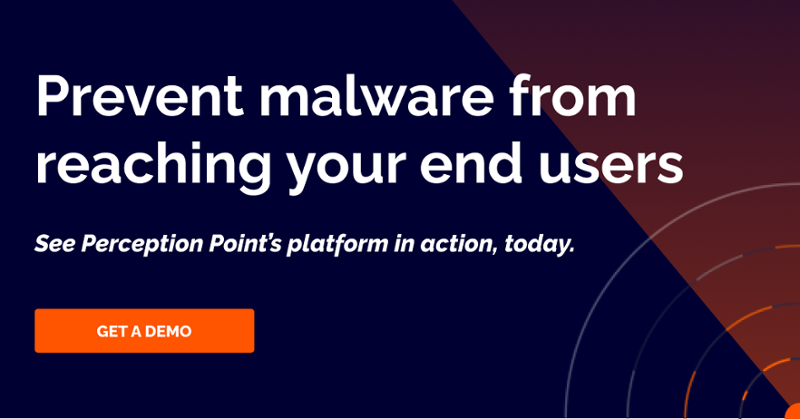In today’s interconnected world, cybersecurity threats continue to evolve, with malicious actors constantly finding new ways to exploit vulnerabilities. One such threat that has gained prominence in recent years is drive-by download attacks.
Here we will explain what drive-by downloads are, how they work, and how you can protect your organization from them.
In this article
What is a Drive-By Download Attack?
Drive-by downloads are a common and dangerous threat on the internet. They can infect your device with malware without your knowledge or consent, just by visiting a compromised website or clicking a malicious link.
Unlike traditional malware infection methods that require user interaction, such as clicking on a malicious link or opening a malicious attachment, drive-by downloads take advantage of vulnerabilities in websites or web applications.
Drive-by downloads are a common and dangerous threat on the internet. They can infect your device with malware without your knowledge or consent, just by visiting a compromised website or clicking a malicious link.
Drive-by downloads are either unauthorized or authorized downloads of software that happen when you visit a website or click a link in an email. The malicious software can be anything from a virus, spyware, ransomware, or adware. The drive-by download is typically triggered by exploiting a vulnerability in your browser, app, or operating system to run malicious code on your device. You may not even notice the download happening, as it can be very small and run in the background.
Examples of drive-by download attacks include malicious ads, exploit kits, and watering hole attacks.
The consequences of drive-by attacks include data theft, ransomware, and botnet participation.

Tal ZamirCTO, Perception Point
Tal Zamir is a 20-year software industry leader with a track record of solving urgent business challenges by reimagining how technology works.
TIPS FROM THE EXPERTS
- Implement an advanced browser security solution. Consider using browser security technology, such as an extension that can transform any browser into a secured workspace with granular browser-level controls and total visibility. This drastically reduces the risk of local malware infections through drive-by downloads.
- Regularly test incident response procedures. Even with strong preventative measures, assume a breach and prepare accordingly. Regularly conduct exercises and drills focused on drive-by download scenarios to ensure your team can respond quickly and effectively to such incidents.
- Educate users on the dangers of unauthorized software. Even though drive-by downloads often happen without user interaction, educate your users about the dangers of unauthorized or pirated software. Such software is often bundled with drive-by download mechanisms that trigger on execution, expanding the risk landscape.
- Limit user permissions. Apply the principle of least privilege (PoLP) to limit user permissions on devices. If a user account is compromised via a drive-by download, restricted permissions can limit the extent of the damage.
- Monitor for unusual traffic patterns. Implement network behavior analysis tools to detect unusual outbound traffic patterns, which can be an early indicator of a successful drive-by download leading to data exfiltration or communication with command-and-control servers.
Debunking the Drive-By Download Myth
Contrary to popular belief, drive-by download attacks themselves are not malware. Instead, they serve as a delivery mechanism for malware.
Cybercriminals exploit vulnerabilities in websites, often injecting malicious code or leveraging compromised third-party elements, to redirect users to malicious websites or initiate the download of malware onto their systems.
How Do Drive-By Download Attacks Work?
Drive-by downloads are either unauthorized or authorized downloads of software that happen when you visit a website or click a link in an email.
The malicious software can be anything from a virus, spyware, ransomware, or adware. The drive-by download is typically triggered by exploiting a vulnerability in your browser, app, or operating system to run malicious code on your device. You may not even notice the download happening, as it can be very small and run in the background.
In other cases, attackers would use social engineering to convince users to acknowledge security prompts and approve the installation of the downloaded malware.
Methods of Drive-By Download Attacks
There are two main methods of drive-by download attacks: authorized and unauthorized.
- Authorized drive-by download attacks involve tricking you into clicking on a link or downloading a file that contains malware. For example, you might see a fake security alert or an ad that prompts you to update your software.
- Unauthorized drive-by download attacks do not require any user interaction. They can infect your device simply by visiting a compromised website that has malicious components embedded in it. These components can scan your device for security gaps and download malware accordingly.
Following the drive-by download, an attacker would typically attempt to hijack the device, spy on user activity, steal credentials, encrypt data/deploy ransomware, etc.
Real-World Examples of Drive-By Download Attacks
Drive-by download attacks can take various forms, and they often evolve to bypass security measures and target different platforms. Some examples of drive-by download attacks include:
- Malicious Ads: Cybercriminals inject malicious code into online advertisements, which can redirect users to malicious websites or trigger automatic downloads.
- Exploit Kits: These are toolkits used by attackers to automate the process of finding and exploiting vulnerabilities in users’ systems, allowing the download and installation of malware silently.
- Watering Hole Attacks: Attackers compromise legitimate websites that are frequently visited by their intended targets, injecting malicious code that infects visitors’ systems.
The Consequences of Drive-By Attacks
Drive-by download attacks can have severe consequences for organizations. Once malware is successfully downloaded and installed, it can perform various malicious activities, such as:
- Data Theft: Malware can capture sensitive information, including login credentials, financial data, and personal information, which can then be exploited for financial gain.
- Ransomware: Drive-by downloads can deliver ransomware, which encrypts the victim’s files and demands a ransom for their release, causing significant disruption and potential data loss.
- Botnet Participation: Infected systems can be used to join botnets, networks of compromised devices that can be harnessed for distributed denial-of-service (DDoS) attacks, spam distribution, or other malicious purposes.
Protecting Your Organization from Drive-By Download Attacks
The best way to prevent drive-by downloads is to avoid visiting websites that could be dangerous or malicious. This includes adult content, file-sharing, gambling, and hacking websites. You should also be careful about opening email attachments or clicking links from unknown or suspicious sources.
However, as attackers become more sophisticated, users can be exposed to such attacks even on legitimate websites (e.g. if some malicious ad code triggers a drive-by download).
To defend against drive-by download attacks, consider implementing the following security measures:
- Keep Software Updated: Regularly update your operating system, web browsers, and plugins to patch known vulnerabilities that attackers could exploit.
- Exercise Caution Online: Be wary of clicking on suspicious links, visiting untrusted websites, or downloading files from unknown sources.
- Use reputable EDR/EPP software and keep it updated.
- Use a security-focused browser extension that can block malicious downloads and malicious websites before they have a chance to deploy malware.
Drive-by download attacks continue to be a significant cybersecurity threat, posing risks to individuals and organizations alike. By understanding the nature of these attacks, being aware of their consequences, and adopting proactive security measures, you can better protect yourself and mitigate the risks.
Preventing Drive-by Downloads with Perception Point
Perception Point delivers one platform that prevents malware from reaching your end users, as well as other types of cyber attacks including phishing, ransomware, APTs and zero-days.
Advanced Email Security is an integrated cloud email security solution (ICES) that can replace SEGs. The solution cloud-native SaaS solution protects your organization against all threats using 7 layers of advanced threat detection layers to prevent malicious files, URLs, and social-engineering based techniques.
Advanced Browser Security adds enterprise-grade security to your organization’s native browsers. The managed solution fuses browser protection technology with multi-layer advanced threat prevention engines which delivers the unprecedented ability to detect and remediate all malicious threats from the web, including phishing, ransomware, malware, APTs, and more. Multi-layered static and dynamic detection capabilities instantly detect and block access to malicious/phishing websites and prevent malicious file downloads of ransomware, malware, and APTs.
Advanced Threat Protection for Cloud Collaboration, File Sharing and Storage Applications, such as Microsoft 365 applications (OneDrive, SharePoint, Teams), Google Drive Box, AWS S3 buckets, Zendesk, Salesforce, and any of the other hundreds of apps out there, protects your organization with near real-time dynamic scanning. It does not tamper with files and does not impede on productivity.
An all-included managed Incident Response service is available for all customers 24/7 with no added charge. Perception Point’s team of cybersecurity experts will manage incidents, provide analysis and reporting, and optimize detection on-the-fly. The service drastically minimizes the need for internal IT or SOC team resources, reducing the time required to react and mitigate web-borne attacks by up to 75%.
Get a demo today!

























